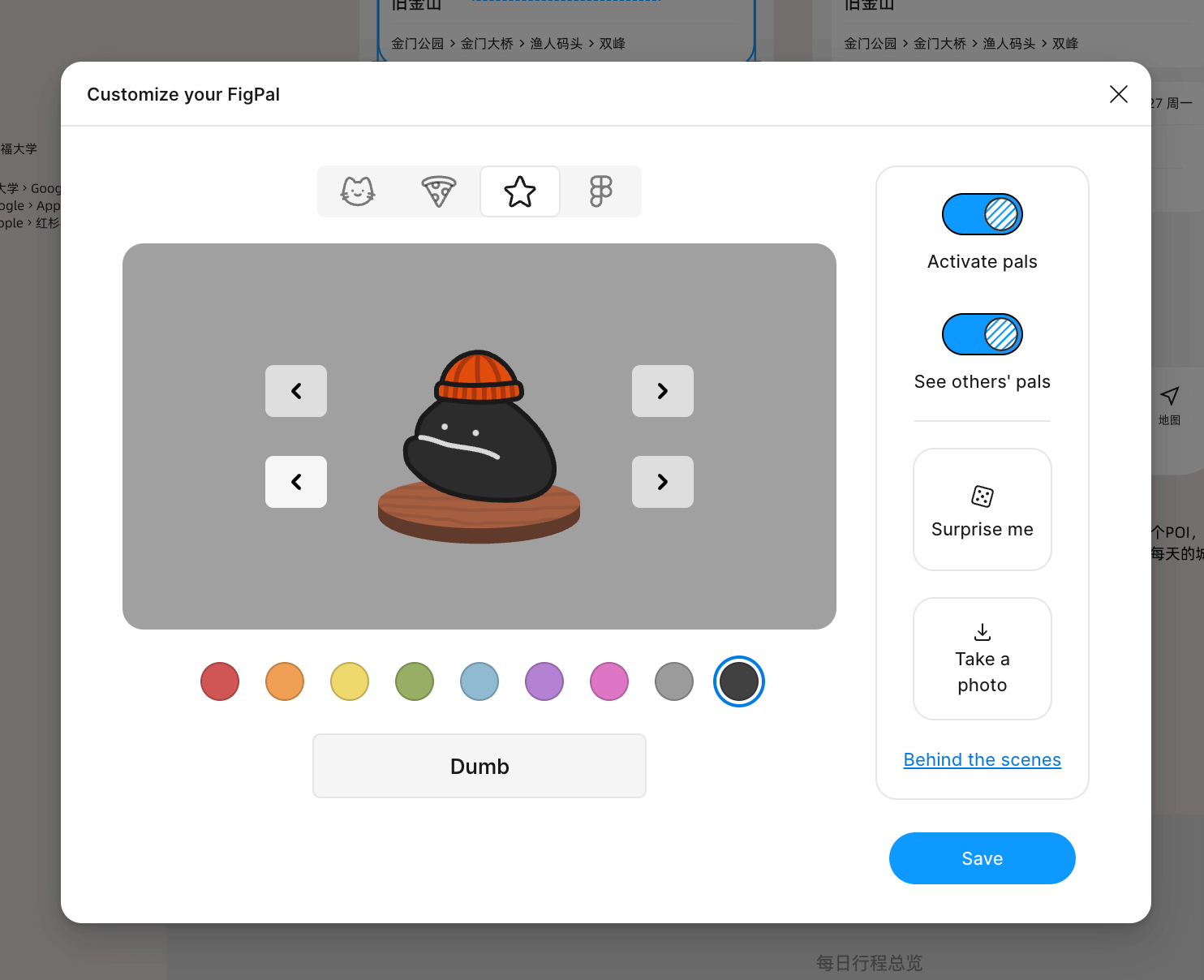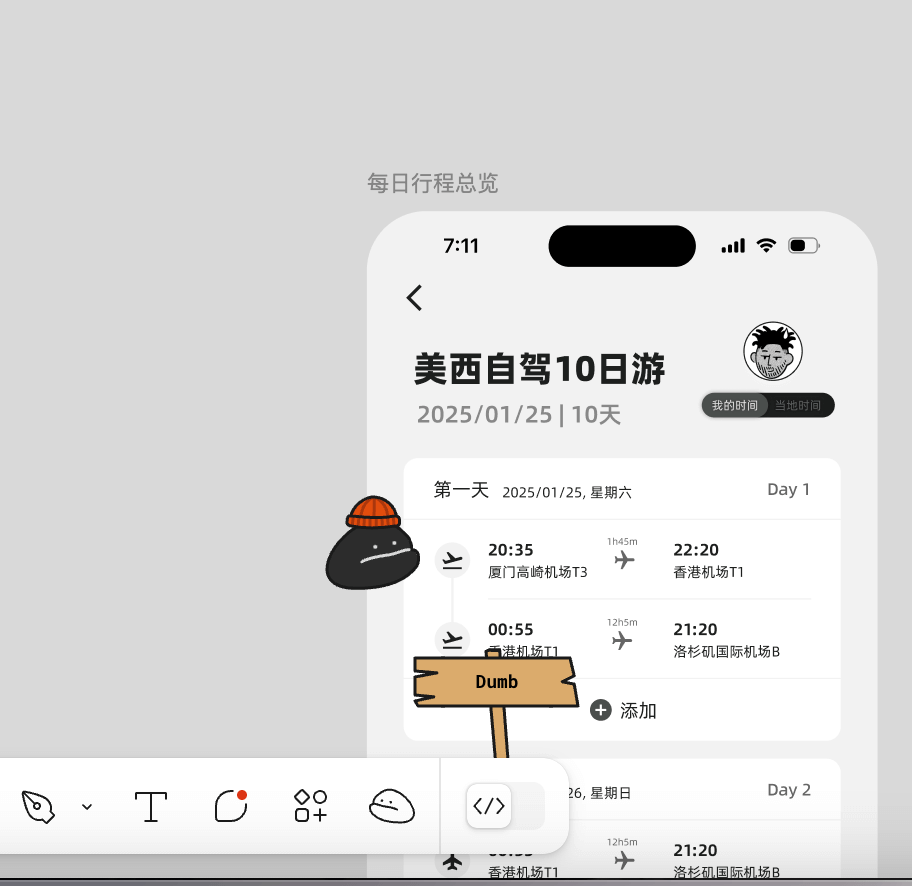[Iter-X] 51/100days
Day5️⃣1️⃣



The best part today is FigPal, haha, it’s so cute. It’s a limited-time feature launched by Figma for April Fools’ Day. It’s really a completely useless but fun feature… I really like this kind of nonsense and quirky stuff; it doesn’t have any commercial value, but it’s very helpful for the brand’s tone.
Today, I fine-tuned the AI process, and now it’s stable and reliable. It can consistently output itineraries, which I’m very satisfied with. I’m still using the previous pseudo-ToolUse idea, where the AI calls a non-existent tool, create_trip, just to get its stable JSON output. Today, I also discussed some benchmarks and personalization aspects with the AI team, and we’re on the same page. Many of our ideas align well, and in the next few days, I’ll be organizing and setting up a complete set of personalization standards. From our perspective, personalization is divided into two levels:
1️⃣ User-level personalization
2️⃣ Itinerary-level personalization
For example, basic preferences like departure city, return city, departure time, budget, group size, and number of days are all part of the basic preferences. Then there are deeper preferences, like whether you’re more into cityscapes or nature, or whether you prefer a fast-paced trip or a more relaxed one. This hierarchy of preferences, from shallow to deep, can be used with AI to create the most effective itinerary planning assistance. Coming back to the above, user-level preferences are default and can cover all itineraries, but if there are different preferences within the itinerary, they take higher priority and will override the user-level preferences. This makes sense because each trip might be different, whether it’s due to your mood, personal experiences, the people you’re traveling with, the time of year, or the destination. Therefore, this hierarchical structure will be more accurate.
Back to user preferences + AI-powered planning, I think there are two main issues in the market right now:
1️⃣ The product is not well-done: Many products just mindlessly add AI, but in my opinion, effective planning is far more important than mindless intelligence. I’d rather have AI help once at a critical moment than have the user retry the planning 10 times. AI should have the authority to refuse planning when there’s insufficient information or downgrade to a conservative planning approach—one that works for most users and doesn’t make mistakes. This depends on how well the AI is trained and how well it collaborates with the context.
2️⃣ Users have overly high expectations: A lot of people have this problem. AI knows a lot about the world, but it’s not a god. If you ask a regular friend, “I want to travel to Italy for 7 days, help me plan,” do you think their plan will meet all your preferences in one go? Maybe a close friend or family member can do this, but that’s because they have enough understanding of your preferences. So I think it’s important to manage users’ expectations. Otherwise, there’s a risk of overpromising and underdelivering. This is something that all AI product managers should be aware of. Personally, I have some ideas on this. AI can start small, letting users see how it can help in specific situations, and once they develop a basic understanding of its capabilities, the AI can expand to cover more scenarios. This approach is much better than presenting a complete product on a PPT, which might give users high expectations, only for them to experience disappointment when the real product falls short.
Lastly, I want to say, if you’re feeling mentally and physically exhausted, don’t push yourself too hard. Take a break to release stress and regain balance. After that, you can jump back in. A long battle won’t be ruined by one or two days, and managing your state is key. When you’re in a good state, your efficiency is higher, and you’ll be more optimistic—otherwise, it’s the opposite.
Summary of current progress:
- Prototype design & UI/UX design: 33%
- Backend (Go) development: 45%
- Client-side (Flutter) development: 40%
- Data: 10%
If you meet the following criteria, feel free to reach out:
- Persistence
- Dreams
- Interest
Enjoy Reading This Article?
Here are some more articles you might like to read next: